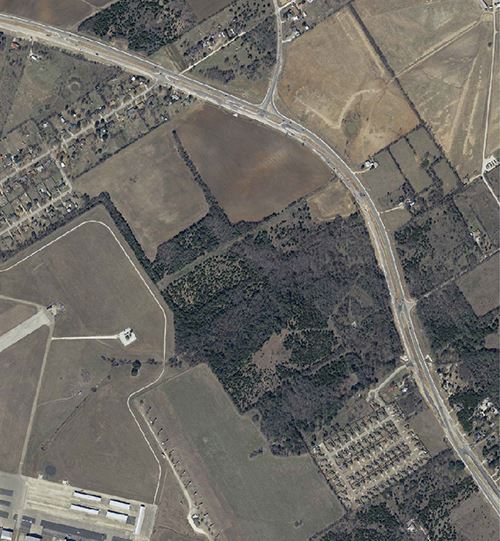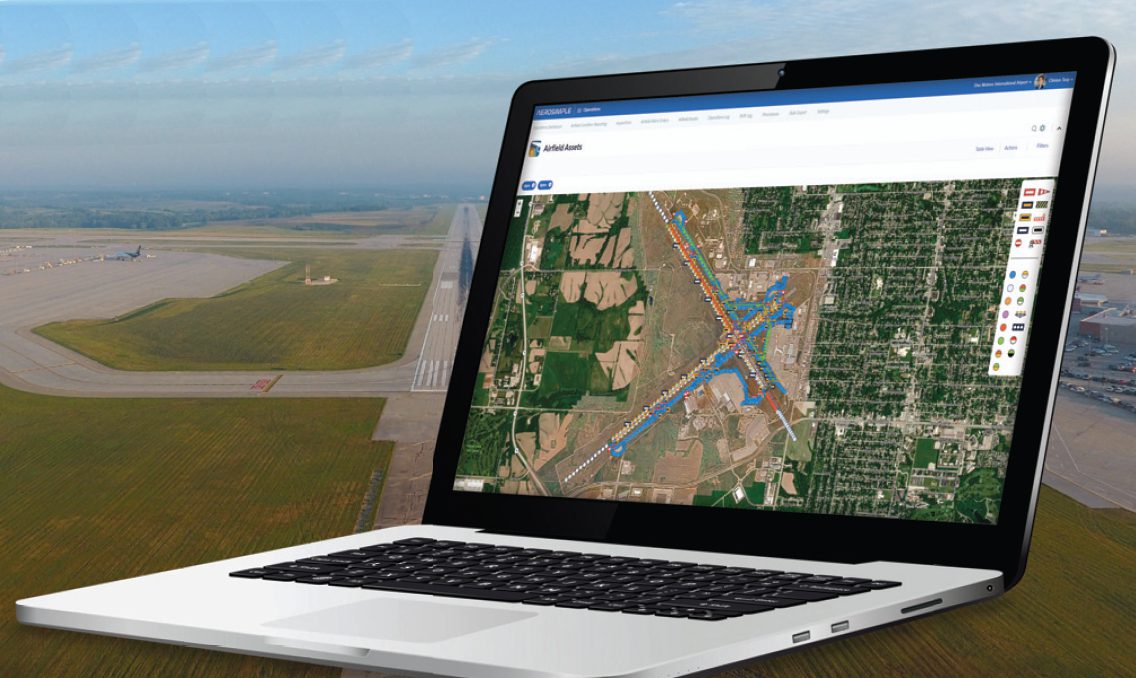It was 2019, and Clint Torp had just started his new job as director of Operations at Des Moines International Airport (DSM) in central Iowa. As the new kid on the block, Torp began familiarizing himself with the facility’s operations and processes. And it didn’t take long before he realized the data collection system DSM had in place wasn’t providing enough data or the right data. As a self-professed “data guy,” Torp knew straight away that he wanted to make some changes.
It was 2019, and Clint Torp had just started his new job as director of Operations at Des Moines International Airport (DSM) in central Iowa. As the new kid on the block, Torp began familiarizing himself with the facility’s operations and processes. And it didn’t take long before he realized the data collection system DSM had in place wasn’t providing enough data or the right data. As a self-professed “data guy,” Torp knew straight away that he wanted to make some changes.
 As it turned out, Torp wasn’t alone in his thinking. The airport team was also looking for something newer, simpler and customizable. “Part of changing a system like this is ensuring you have employee buy-in,” Torp relates. “We had no problems with that. There was enough frustration from our team that helped propel the desire to seek out the new product.”
As it turned out, Torp wasn’t alone in his thinking. The airport team was also looking for something newer, simpler and customizable. “Part of changing a system like this is ensuring you have employee buy-in,” Torp relates. “We had no problems with that. There was enough frustration from our team that helped propel the desire to seek out the new product.”
The new system, in place now since November, is providing DSM with the data it needs to maintain efficiencies. “I am a big believer in data and utilizing it to improve the business process,” says Torp. “We found this product [Aerosimple] and liked its concept. It provides at a single price all the modules we were looking for with the promise of innovation and the ability to work with us to further develop tools to improve our data collection. We wanted our teams better equipped to conduct inspections, issue work orders, and monitor wildlife and tie it all together in a cloud-based solution.”
|
Project: Operations Software Locations: Des Moines (IA) Int’l; Waco (TX) Regional System: Aerosimple
Cost: $6,000-$50,000 annual fee, depending Implementation: One month for airports using pen & paper processes; several months for airports switching from other digital systems Key Benefit: Easier recordkeeping/retrieval for Part 139 inspections |
Knowing What You Want
Changing from one system to another wasn’t easy. Torp says the first step was determining what types of information the airport needed to help employees do their jobs better. “Anytime you change systems, you want to look at the structure for how you want to use data,” he says. “We needed to review whether the data elements we were collecting were important, and whether there was other data we wanted to collect that we hadn’t been collecting.”
That internal process took several months and resulted in outlines for two main modules: one for operations and another for work orders. The operations module involves record keeping for Part 139 inspections, operations logs and visual mapping of the facility. The work order module includes all airfield and non-airfield work orders as well as records for preventive maintenance programs.
Eventually, DSM created modules for wildlife control and lease management. The best part about the changes? All data is automatically tied into an inspection log. “That helps us when we have our certification inspections,” Torp notes. “We now have all that information in an easy-to-view format that hopefully helps us get through our inspections quicker and easier.”
The airport contracted Aerosimple for the software and installation. Implementation took about three months because of the intricate details involved with changing over from the old system, says Stephen Blessing, director at Aerosimple.
 “Des Moines had a good system in that they were utilizing it well,” says Blessing. “But they wanted additional solutions and features that were more customizable and expandable to provide better solutions.”
“Des Moines had a good system in that they were utilizing it well,” says Blessing. “But they wanted additional solutions and features that were more customizable and expandable to provide better solutions.”
Vishu Rao, founder and CEO of Aerosimple, says “It is easier when an airport moves from pen and paper to using a system, compared to an airport switching from one system to another. But with Aerosimple, we have made the switching between systems also simple.”
Torp reports that DSM was able to export about 80% of its data onto the new site—almost everything except the preventive maintenance data. But the rest had to be input manually. “That was because of the vast differences in the two systems for that application,” explains Torp.

The airport ran both programs for a month to ensure the new system was working well before discontinuing use of its former system. In November 2021, DSM completely switched over to the new Aerosimple software.
Jetsons vs. Flintstones
 Waco Regional Airport (ACT) in central Texas moved from old school, piecemeal processes to Aerosimple software in November 2020. “Waco was using Excel, Word docs and pen and paper, but there was no actual system in place,” says Rao.
Waco Regional Airport (ACT) in central Texas moved from old school, piecemeal processes to Aerosimple software in November 2020. “Waco was using Excel, Word docs and pen and paper, but there was no actual system in place,” says Rao.
Cody Mathis, ACT’s Airport Operations manager, describes the digital transformation as a true game changer. “We essentially turned five three-ring binders into one iPad that you can carry everywhere that serves the same purpose,” he remarks.
Mathis says that the new system helps with Part 139 inspection processes and also tracks other operational areas such as inventory and lease management issues, which is beneficial for the administrative team. “One of the primary requirements for the software was a feature for lease management,” he says. “The need for going digital nowadays goes beyond just airfield compliance.”
He cites hangar leases as a prime example. “We can pull up a satellite image of our properties and click on a hangar and come up with all information about that property such as the lease, the payments, whether there are any back payments due or even if the lease is coming up,” Mathis explains. “This new system is so much more usable and paints a better picture for the people that are utilizing the data. In fact, you can even set up alerts if someone is behind on a payment or if a lease is about to expire. It’s the next level of management capability, and that’s totally a bonus on top of an original objective, which was about simplifying compliance for Part 139.”
 The airport’s main application is for daily inspections and special inspections—maintaining data for everything from the fuel farm to wildlife management. “The cool thing is you can build your own data collection,” he adds. “Once you purchase the software, you have free reign to create data collection to serve your specific airport.”
The airport’s main application is for daily inspections and special inspections—maintaining data for everything from the fuel farm to wildlife management. “The cool thing is you can build your own data collection,” he adds. “Once you purchase the software, you have free reign to create data collection to serve your specific airport.”
The Aerosimple system allows for immediate information gathering and retrieval for Part 139 purposes. “When the FAA comes in once a year and says, ‘Show us your records from Jan. 3, April 15 and March 11,’ doing that from paper is very difficult,” says Blessing. “The user can easily bring up information about the inspections that took place on those days, whether there were any existing work orders for those days and whether there were any new work orders created for items such as lighting, signage, pavement markings and ruts.”
Rao notes that the system installation at ACT was rather quick (about one month) because airport officials knew what they wanted. “That’s one of the biggest benefits of our system,” he says. “Waco was one of those airports that just knew what they wanted. There were a few additional things they wanted as well, so we worked with them to develop those features.”

Making the Switch
In retrospect, Torp says that getting input from the team at DSM was critical for successful implementation. He notes that staffers were part of the change from Day One and provided valuable information to ensure the new software provided them with data to help increase productivity. “When the team is used to doing something one way for so long, and you make a significant change, the biggest issue was double-checking the work to make sure we weren’t entering information the old way into the new system,” he relates.
Cost of the new software was a major factor for DSM and ACT. An annual subscription fee for Aerosimple ranges from $6,000 to $50,000 per year, depending on airport size, and includes initial implementation. Blessing notes that size-based subscription fees make the system perfect for both small and large airports.

Rao adds that the software is continually evolving, with information airports provide to Aerosimple driving the refinements. “The system will meet the needs of changing regulations and requirements because it’s not just one airport that is building the software; it is the brainpower of several other airports,” he explains. “Ultimately, the software system helps airport officials do their jobs better.”
Mathis reports that implementation at ACT was quick and easy once the software was installed. “As far as transitioning, it’s all at your discretion,” he says. “What we did was just flip the switch. We just put the pen and paper down, grabbed the iPad and got started.”



 facts&figures
facts&figures

